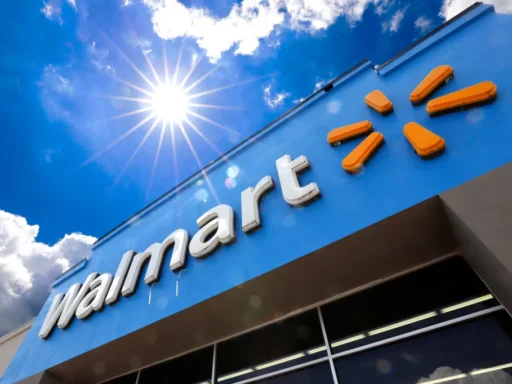Key Points
- Capital One’s Acquisition Attempt: Capital One is making a significant move to acquire Discover, aiming to expand its role from a credit card issuer to owning a major payment processing platform.
- Strategic Motivation: The goal of Capital One’s acquisition is to own a payment processing platform (Discover), which will enable it to directly collect transaction fees and compete more successfully in the credit card market.
- Underdog Story with Major Financial Implications: The move is framed as an ambitious, albeit financially steep, strategy for Capital One to become a dominant player in the credit card market, emphasizing the calculated risk and potential for substantial growth.
All credit cars are not created equal, as I’m sure you know if you have more than one. They all have their own unique perks, fees, and, most importantly, designs. For a consumer, they really just care about the ability to purchase things using a credit card and pay them back later. For the companies themselves, their differences go much deeper, and that is what led us to such a massive acquisition attempt by Capital One.
The Mechanics Behind Payment Processors
In case you didn’t know, each major payment processor (fancy talk for credit card company) has their own payment system built in. It’s very easy to tell if it is a Mastercard, Visa, Discover, American Express (Amex), etc. based simply on the pattern the numbers follow. American Express cards will always start with a three. Visa cards will always start with a four, Discover’s with a five, and Mastercard’s with a six.
The reason the first number is so important is because it tells you which payment processing system they are going to use. I’m sure by now you’ve heard of other credit card companies like Apple Card, Capital One, Chase, etc. In reality, those companies are actually paying a processing fee each time you use the card with one of the main companies mentioned above. The fees vary depending on the company, but it is generally understood that American Express fees are the highest, which is why many businesses won’t allow people to use American Express.
The Strategic Move by Capital One
Notice that in the list of the main four processors, Capital One is not on that list. This is simply to demonstrate that their larger objectives are driving this purchase decision, not to imply that they aren’t a legitimate and trustworthy company. Why would you buy a little fish when you can own the pond? They are currently a little fish, competing with dozens (probably more) companies to get people to sign up for their credit cards. Instead of playing in that arena, they have now decided that they can own one of the ponds and get all the transaction fees from companies that are also using the Discover processor to operate their cards.
Now that we understand better how the credit card landscape works, and their motivations behind making this purchase, let’s look at the price. Thirty five billion is a massive chunk of change. To do this, we have to do a bit of numerical speculation based on the data that we have. Starting at a high level, there were roughly 150.15 million credit card transactions that occurred in the United States in 2022. During that time period, Discover was believed to have 4.00% of the market share.
150.15M (total US transactions) x .04 (market share) = 6.006M transactions in 2022
We also need to know the total number of transaction fees collected during that time period across all credit cards, which is approximately $3.2T in the US alone (no wonder we have so much credit card debt, but that’s a different story). $3.2T spent, with an average credit card fee of 2.5%, gives us about $80B in collected transaction fees for the year. Discover’s portion of that is a relatively small amount, at just about $3.2B. This points to the fact that the transaction fees alone aren’t enough to justify the hefty price tag – but it’s an important piece.
The average annual fee for a credit card is $105. Being that Discover has approximately 60.6M cardholders, with roughly 30% of them carrying an annual fee, we can approximate their annual income from that category at around $1.9B, putting them at a total so far of $5.1B. We are getting closer to the justification, but we are still way off. So if the transactions and the annual fees aren’t enough, where does most of their money come from?
The average interest rate on a credit card is 22.8%. With Discover carrying $102B in customer balances (unpaid credit card debt), they can expect to earn $1.939B per month off credit card debt. That represents a potential annual net income of $23.256B. Add that to the $5.1B we already have, and we arrive at a potential net profit of $28.356B in annual income for Discover – or in simplified terms, a ton of money!
Of course, there are defaults, and people who don’t pay their debts off, accounting for 2.97% on average, representing a presumed $747.2M each year. We also have the charge-off rate, or lost revenue that will never be collected, at 3.49%, representing $878.05M each year. Those together decrease the annual projections to $26.74B in net income. With 2023 seeing an 83.58% increase in operating expenses, representing $14.883B, that would bring their gross profit to approximately $11.85B.
The Impact of Regulatory Approval
I understand this has been a lot of numbers, but I have just one more for you. It is generally understood that when creating the value of a company, you should look at their profits and multiply by 3-5x, depending on the industry. Using that understanding, we know that Capital One would have to supersede the current market cap for Discover (At the time of writing, it is currently worth $30.54B) to make it worth it for them. In this case, the current multiplier is sitting at 2.58x, or it would take them 2.58 years to remake the entire value of their company if everything remained the same. The $35.3B is representative of a 2.97x multiplier, which is directly related to the amount they hope they can grow the acquisition by in the next three years – $4.76B.
How will they do that? Switching Capital One customers to the Discover payment processor, essentially stealing 10.51% (the amount of Capital One’s share in the US) from Visa. This will allow them to take 14.51% (the original 4% plus the 10.51% from Visa) of the credit card market share and begin to collect new transaction fees, on top of collecting the interest from the $102B that Discover currently has in the collectable debts.
The moral of the story here is that the mathematicians and lawyers that be, saw a vision, valued it at more than $4.76B in growth over the next 3 years, and decided that the third largest credit card company in the United States can take on the big dogs. I hate to say it’s an underdog story, because we are talking about billions of dollars for all of them, but the numbers tell us that it will be an uphill battle for the ages. In the upcoming years, expect to see some very aggressive changes if the regulatory bodies approve this.









